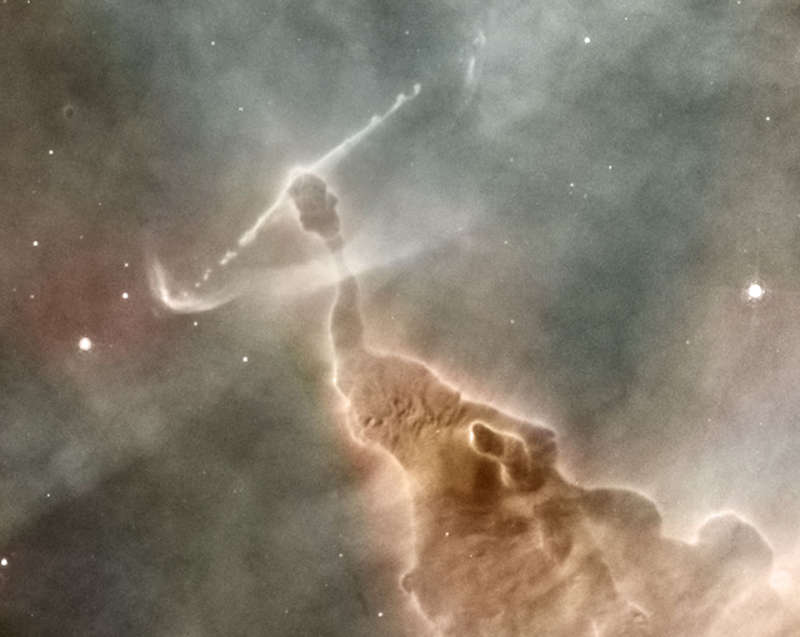
|
Credit & Copyright: NASA,
ESA,
N. Smith
(U. California, Berkeley)
et al.,
and The Hubble Heritage Team
(STScI/AURA)
Explanation:
Inside the head of this interstellar monster is a star that is slowly destroying
it.
The monster, actually an inanimate pillar of
gas and
dust, measures over a
light year in length.
The star, not itself visible through the opaque dust,
is bursting out partly by ejecting
energetic beams of particles.
Similar epic battles are being waged all over the star-forming
Carina Nebula (NGC 3372).
The stars will win in the end, destroying their
pillars of creation
over the next 100,000 years, and resulting in a new
open cluster of stars.
The pink dots are newly formed stars that have already been freed from their
birth monster.
The
above image is only a small part of a
highly detailed panoramic mosaic of the
Carina Nebula
taken by the
Hubble Space Telescope in 2007.
The technical name for the stellar jets are
Herbig-Haro objects.
How a star creates
Herbig-Haro jets is an ongoing
topic of research, but it likely involves an
accretion disk swirling around a central star.
A second impressive
Herbig-Haro jet is visible across the bottom of a
larger image.
|
January February March April May June July August September October November December |
| ||||||||||||||||||||||||||||||||||||||||||||||||
NASA Web Site Statements, Warnings, and Disclaimers
NASA Official: Jay Norris. Specific rights apply.
A service of: LHEA at NASA / GSFC
& Michigan Tech. U.
Based on Astronomy Picture
Of the Day
Publications with keywords: carina nebula - dust - NGC 3372
Publications with words: carina nebula - dust - NGC 3372
See also:
